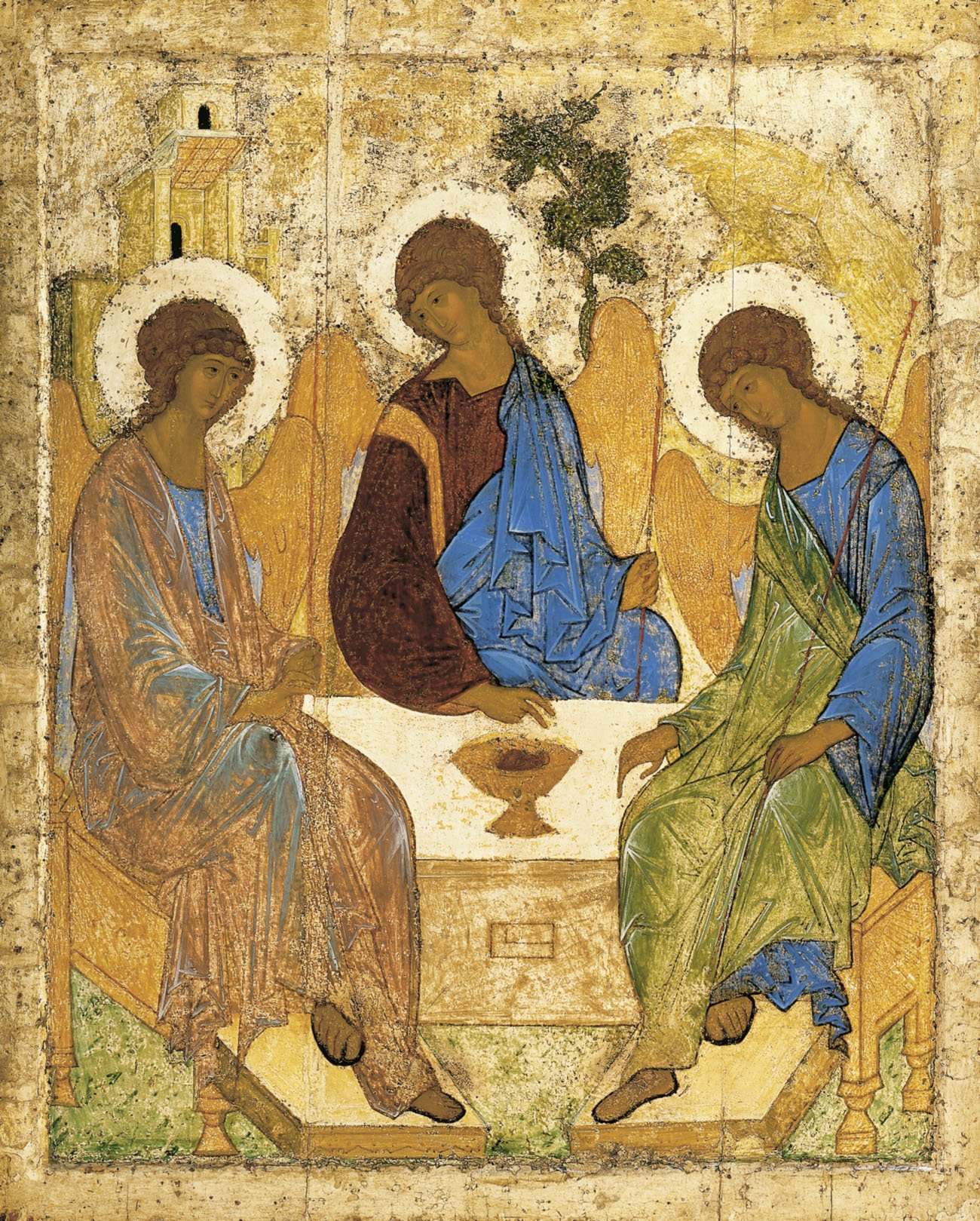The Promise of the Holy Spirit
AM Psalm 16, 17 • PM Psalm 134, 135
Exod. 16:23-36 • 1 Pet. 3:13-4:6 • John 16:1-15
How appropriately circular that I’m writing this Morning Reflection on Maundy Thursday of Holy Week about today’s reading from the gospel of John, which describes the very events we are commemorating on this day, Jesus’s last supper with his friends and his humbling, loving act of washing their feet. Jesus knows his time is short, and there’s lots that he still needs to tell them. He rushes through saying he will be leaving them soon to assure them that a Comforter—Counselor—Paraclete—Advocate—Intercessor—referred to by different names in different translations--will come to take his place. We know this to be the third person of the Trinity, the Holy Spirit, but it’s understandable that the disciples were confused and disappointed to think Jesus was sending a substitute. All they wanted was for Jesus himself, their friend, to stay with them.
The Trinity seems so simple, and yet so complicated. Traditional Christianity gives the Holy Spirit (God the Sustainer) equal status and equal divinity with the Father (God the Creator) and the Son (God the Redeemer). St. Patrick’s comparison to the shamrock leaves—the great Three in One—may work in a children’s sermon, and it works for me some of the time, but theologians have labored at it through the centuries*, and many a minister has faced with trepidation writing the yearly Trinity Sunday sermon about the three persons of God existing in one.
I especially find meaning in the icon of the Holy Trinity by the 15th century Russian artist Andrei Rublev. In it the three angels, who received hospitality from Abraham and who then announced the good news that Sarah would soon give birth to a son, are seated at a table under a tree in front of Abraham’s house. A simple meal, a gracious host. But by the nineteenth century, scholars and art critics had come to believe that Rublev meant the icon to also describe the Christian Trinity. Traditional depictions of the hospitality story had shown such plot elements as Abraham washing the angels’ feet and Sarah and servants preparing the meal. None of these details appear here in the quiet communion of the three angels, as their bodies and their outstretched hands form a circle. For more of the symbolism and history of the icon, I refer you to the Wikipedia article “Trinity (Andrei Rublev).” Meanwhile enjoy with me the simplicity and complexity of the Holy Trinity through the beauty and serenity of this magnificent piece of art.
Written by Kay DuVal
Even New Yorker artists in our 21st century note the trepidation theologians feel when confronting the doctrine of the Trinity: www.newyorker.com/cartoon/a20991

